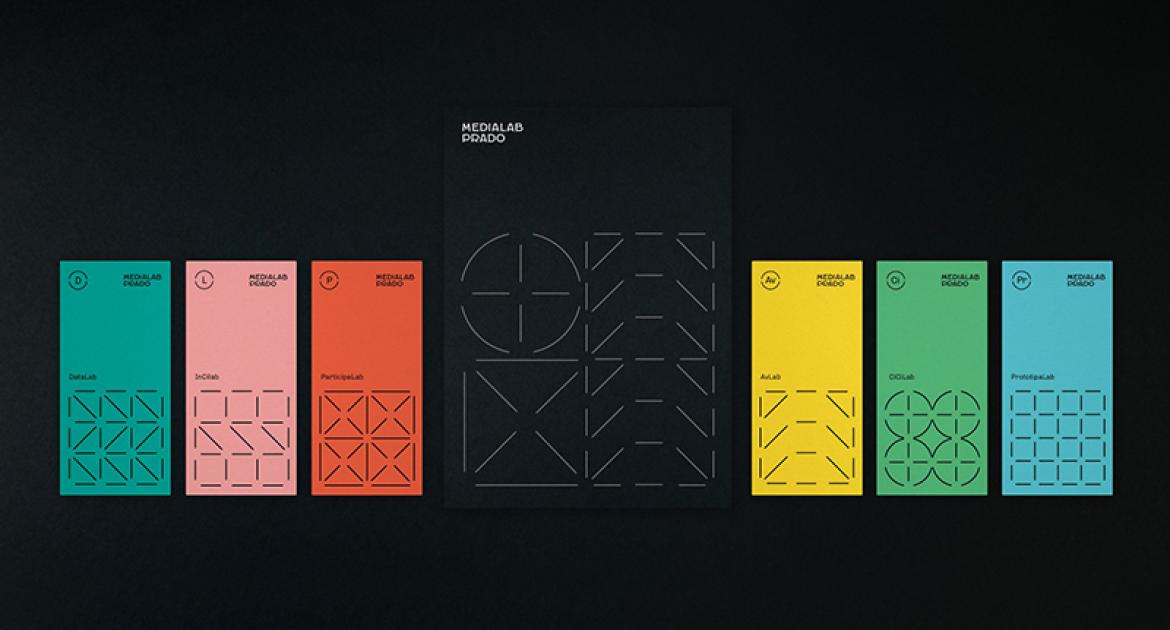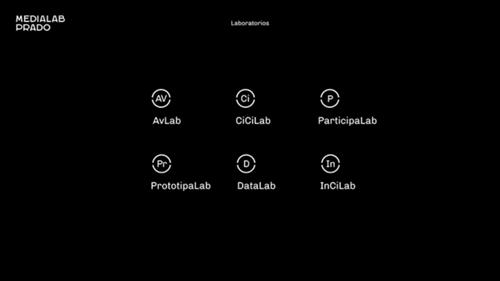New artwork for the new Medialab Prado


New artwork for a new era. A new visual universe for the new ecosystem of civic laboratories. Last year, Medialab Prado strengthened its workforce and widened the range of its working areas. The main novelty was the birth of Participa Lab, the Collective Intelligence for Democratic Participation laboratory. At the same time, Medialab-Prado restructured its strands of work, organising itself into six civic laboratories. The Civic Innovation Laboratories umbrella now covers Participa Lab (mentioned earlier), InCiLab (Civic Innovation Laboratory) and Data Lab (Data Laboratory). The other three labs are CiCiLab (Civic Science Laboratory), Prototipa Lab (linked with the Centre's fab lab) and AvLab (linked with artistic expression and digital culture).
Design studio Tata & Friends was in charge of revamping the graphic identity of Medialab-Prado. To continue with work on recovering the memory of the old Belgian sawmill (Serrería Belga), the building that houses Medialab-Prado, the decision was made to keep the Serrería sobria typeface, an Open Font developed by design studio Manufactura Independiente. The first challenge in the artwork renovation process was to ground the imaginary of "civic laboratory" in an individual graphic universe of its own. A civic laboratory – in the words of Juan Freire – "is designed for listening and production through prototyping". Civic laboratories are "infrastructures that enable communities to tackle innovation challenges as well as devices whose own actions help to make civic practices visible". How can you graphically visualise a civic laboratory? How do you make the ecosystem of Medialab-Prado civic laboratories visible? How does it relate to open culture, civic innovation and participation?

The essence of the new artwork has been captured by Jaime Fernández, art director at Tata & Friends, and by the Medialab-Prado workforce. The collective task made Jaime Fernández think of Medialab-Prado as "an R&D department for the local community". As "a human and inclusive meeting point". As a place where "collaboration" and "open source technology" are building a community. The process of choosing the range of colours tried to avoid the aesthetic of technological innovation based on patents, the start-up model and competition. The colour palette gives character to concepts more in keeping with the Medialab-Prado work ethos of social innovation, open innovation and civic innovation.
One of the main features of Medialab-Prado, its role as an incubator of communities that self-manage part of the space and the programme, led to the new graphic design having a modular structure. Medialab-Prado's common denominator of open culture, remixing and circulating free knowledge underlined the need for flexible artwork that could be adapted by the Centre's communities themselves. "Each Lab's artwork is based on an individual template of elements that allows different parts to be adapted. Some templates are inspired by specific elements" says Jaime Fernández.
The artwork template of ParticipaLab refers to distributed network topology. The CiCiLab template of circles is based on the aesthetic of microscopes. The AvLab template is inspired by sound waves. The PrototipaLab has shapes inspired by the panels that fix tools in the Medialab-Prado fab lab. From now on, the Medialab-Prado design team will be producing work using the new graphics, personalising everything with elements from each event, meeting or project.
Full presentation of the graphics on SlideShare.
Photo album on Flickr




 Medialab-Matadero Madrid
Medialab-Matadero Madrid